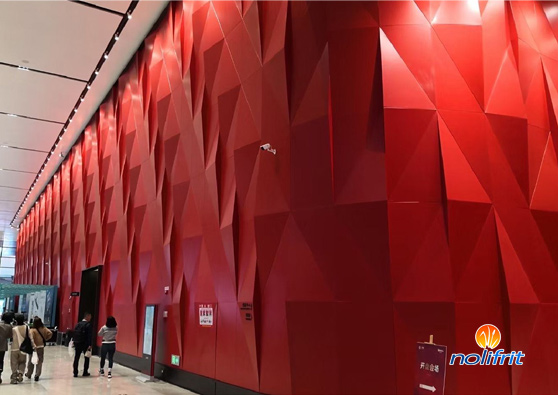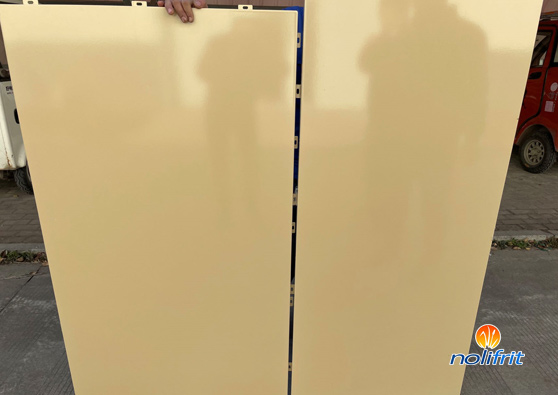Traditional Art Enamel in Architecture
Art enamel originated from glass decoration metal. In the 13th to 11th century BC, the earliest enamel decoration appeared in the metal crafts of Mycenae. In the Roman Empire, inlaid enamel and non-filament enamel fired on bronze appeared. From the 11th to the 15th century, carved enamel, relief enamel, translucent enamel, painted enamel, etc. were developed successively. In the Middle Ages, many metal products were decorated with enamel into handicrafts, and even weapons, horse decorations and household utensils were decorated with enamel. Enamel was also used to decorate tables, chairs, beds, hanging screens, etc. in the Chinese court, as well as the indoor ceilings and walls of French feudal manors. After the 16th century, more and more furnishings began to be decorated with enamel.


Enamel plates have beautiful appearance, diverse colors, bright colors, easy to clean and maintain. They have various dimensions (can be made into various large planes and curved surfaces) and have good physical and chemical stability, which makes them favored by architectural designers. At the same time, according to the designer's design concept, combined with the purpose, shape, and texture, the product beauty can be reflected with appropriate patterns and colors, which cleverly adds brilliance to the product, accelerates and improves the visual communication function, and impresses the user's heart.


1 The application of traditional crafts in architectural enamel
Use traditional crafts in the production of enamel art paintings, give full play to the performance characteristics of enamel materials, and form the unique artistic effect of enamel murals.
1.1 Spraying flowers and spraying enamel
Enamel spraying flowers and spraying enamel are processes that use flower plate templates or directly use colored enamel to spray on the board and then burn it.
1.2 Hand-painting
Hand-painting is a way of expression in which artists use specially prepared pigments or colored enamel to hand-paint patterns on building boards, and then burn them at high temperature.
1.3 Brushing powder
Brushing powder is a way of expression in which colored enamel is sprayed on the enamel board, and after drying, the unwanted colored enamel is brushed off by the template and then burned. This method is generally used for the production of single-color block patterns.
1.4 Film tearing
It is to process the special film with graphics, cut it into the required pattern, stick it on the enamel plate, spray it with colored enamel and dry it, and then tear off the special film to form the pattern. This method is simple and novel, and it is a supplement to the decorative flower form.
1.5 Artistic enamel
Other production methods include inlaid silk enamel, carved enamel, relief enamel, translucent and inlaid enamel, etc.